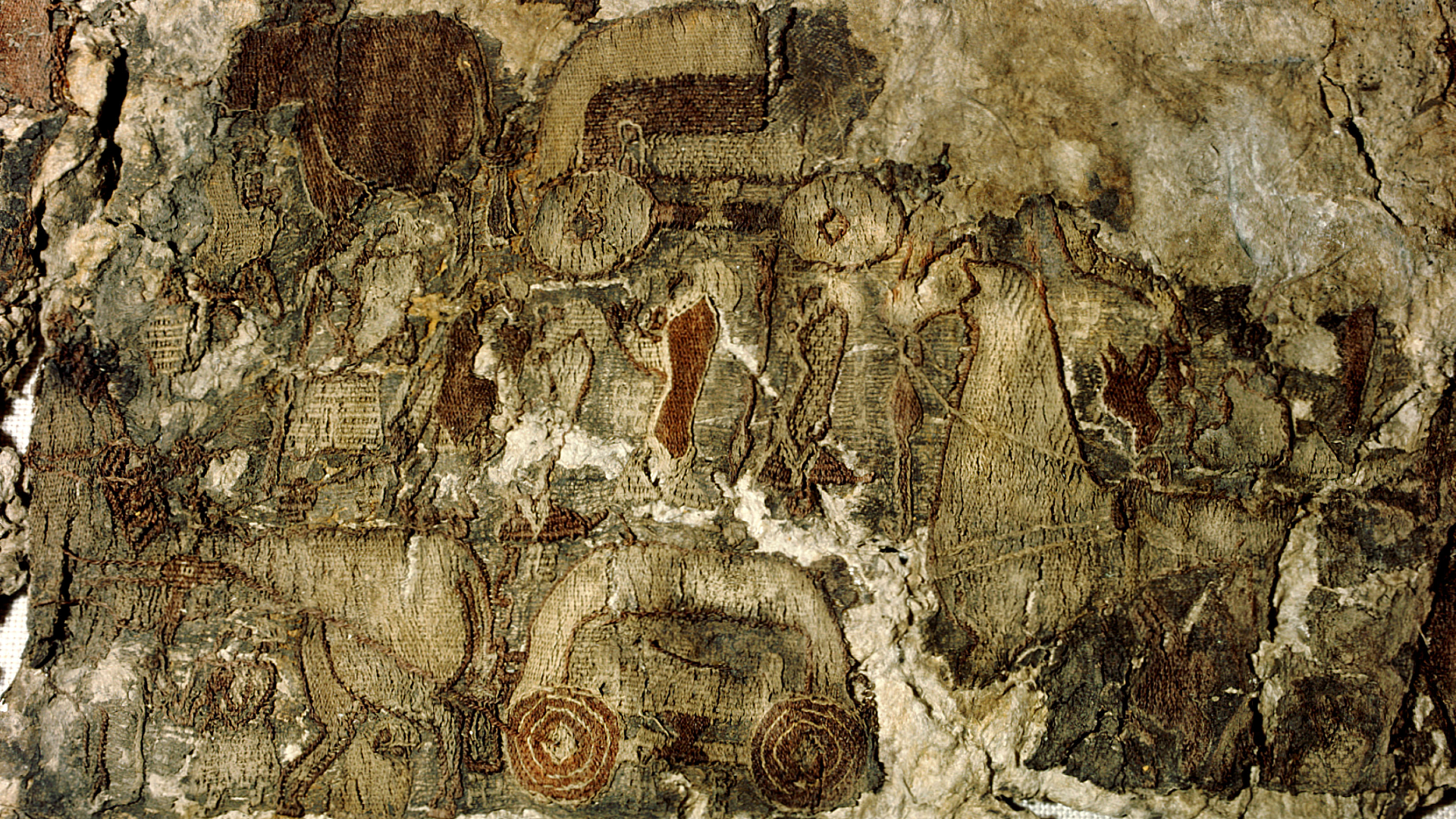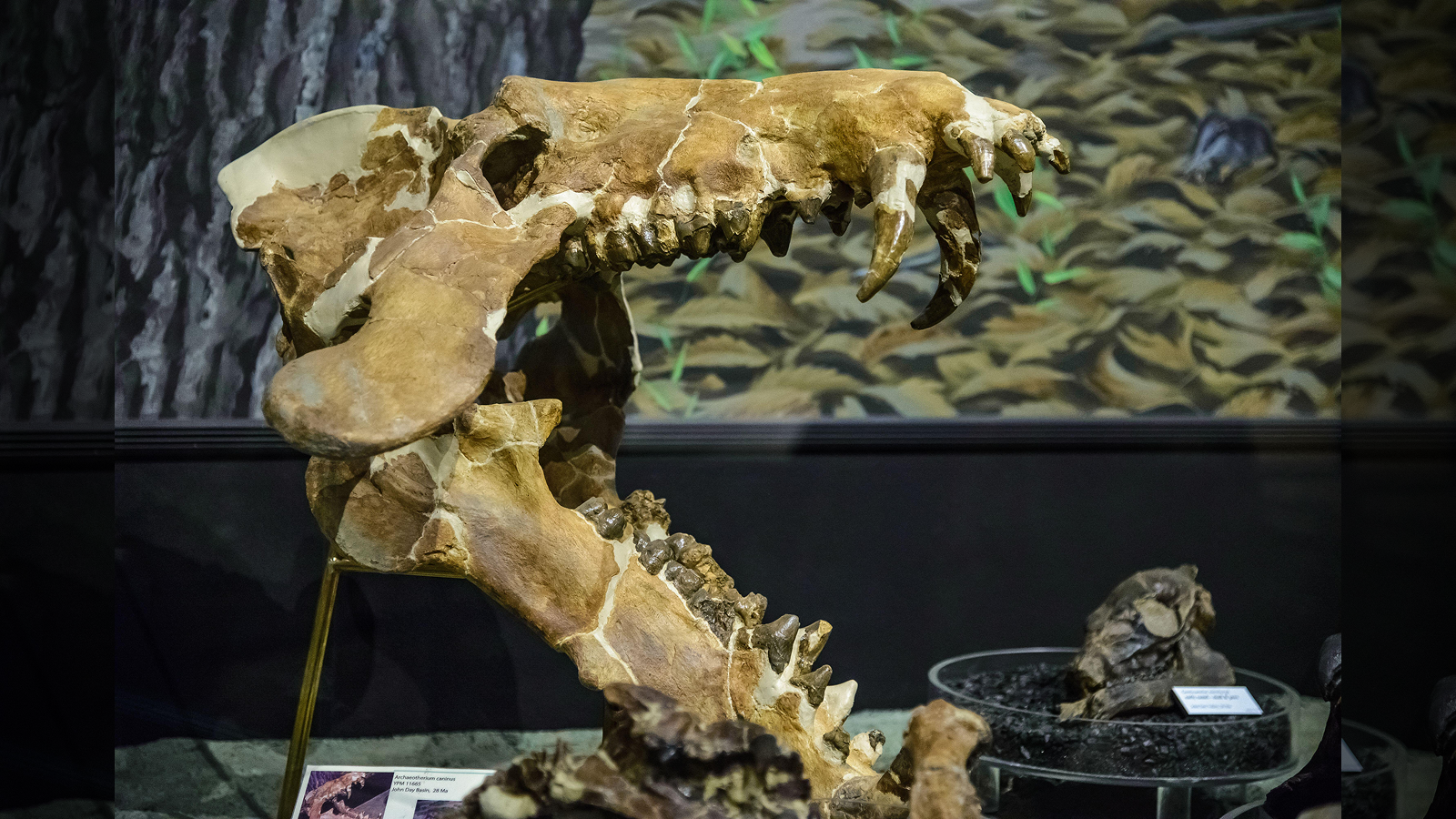Oseberg tapestry: Viking Age artwork from a boat burial that may depict the Norse tree of life
This tapestry also contains one of the only known depictions of a horned Viking helmet.

Name: Oseberg tapestry
What it is: Fragments of a woven, patterned textile
Where it is from: Tønsberg, Norway
When it was made: Around 834
More than a century ago, archaeologists excavated a Viking ship buried in the ground at the Oseberg farm in Tønsberg, Norway. Inside the unusually well-preserved carved oak vessel were the skeletons of two women who had been richly buried with clothes, farm equipment, domestic animals and a detailed tapestry that depicts one of the only known examples of a horned Viking helmet.
Tree-ring dating of timbers from the grave placed the Oseberg ship burial at around A.D. 834. Inside the main burial chamber, excavators discovered fragments of a tapestry that, when reconstructed, measured 6.3 by 9 inches (16 by 23 centimeters). Made of wool, silk and flax, it includes depictions of humans, animals and wheeled vehicles. Fragments of only one part of the full tapestry have survived, and experts are unsure of the original size.
Although the textile appears brown and beige today, it was originally made with yarn colored with a range of natural dyes. Remnants of the original red can be seen, for example, in the rough diamond shape in the middle of this fragment and in the concentric circles below that.
Given the poor condition of the textile, experts are unsure of the exact scene it depicts. The mix of people, animals, wagons and houses suggests a possible funeral procession headed toward a large tree that may represent Yggdrasill, the Norse tree of life. Other human figures — both male and female — hold weapons and wear ritual clothing. Stylistically, the Oseberg textile is similar to the Bayeux tapestry, which was made over two centuries later in what is now France, as both show a narrative in linear fashion similar to a comic strip.
One reason the Oseberg tapestry is famous is its unique depiction of a horned helmet. Horned Viking helmets have long captured the imagination of the modern world, but they are likely a 19th-century myth. Although the fragmentary metal Viking helmets that have been discovered do not have horns, the portrayal of a warrior — possibly a berserker — wearing a horned helmet on the Oseberg textile leaves open the possibility that some Vikings did indeed own horned helmets, perhaps for special occasions.
The Oseberg tapestry is in the collection of the Museum of the Viking Age in Oslo. Experts continue to study the numerous fragments in an attempt to virtually stitch the tapestry back together someday.
Get the world’s most fascinating discoveries delivered straight to your inbox.

Kristina Killgrove is a staff writer at Live Science with a focus on archaeology and paleoanthropology news. Her articles have also appeared in venues such as Forbes, Smithsonian, and Mental Floss. Kristina holds a Ph.D. in biological anthropology and an M.A. in classical archaeology from the University of North Carolina, as well as a B.A. in Latin from the University of Virginia, and she was formerly a university professor and researcher. She has received awards from the Society for American Archaeology and the American Anthropological Association for her science writing.
You must confirm your public display name before commenting
Please logout and then login again, you will then be prompted to enter your display name.
